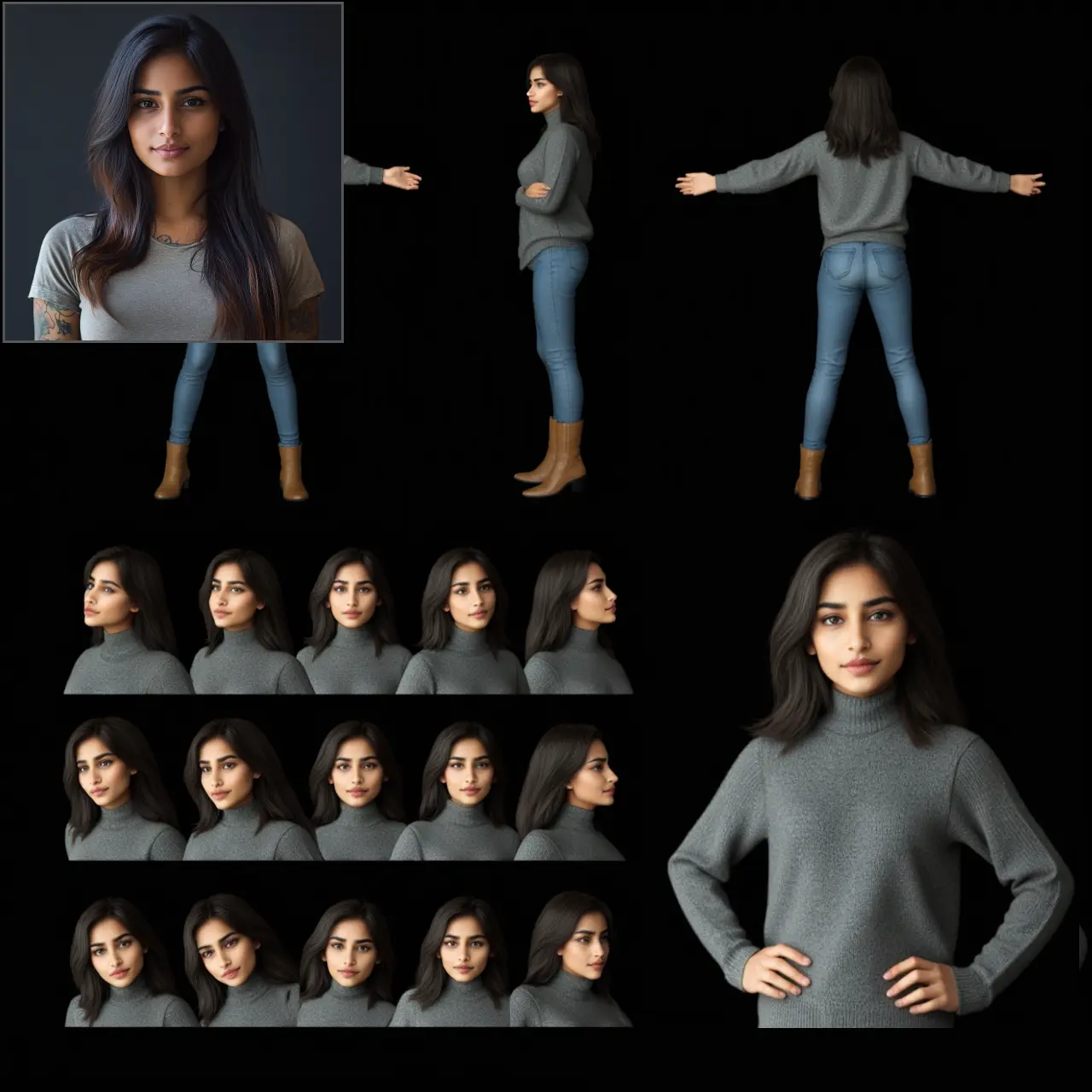ComfyUI Node: Load EXR
LoadExr
CategoryImage/EXR
Conor-Collins (Account age: 459days) Extension
ComfyUI-CoCoTools Latest Updated
2025-03-05 Github Stars
0.03K
How to Install ComfyUI-CoCoTools
Install this extension via the ComfyUI Manager by searching for ComfyUI-CoCoTools- 1. Click the Manager button in the main menu
- 2. Select Custom Nodes Manager button
- 3. Enter ComfyUI-CoCoTools in the search bar
Visit ComfyUI Online for ready-to-use ComfyUI environment
- Free trial available
- 16GB VRAM to 80GB VRAM GPU machines
- 400+ preloaded models/nodes
- Freedom to upload custom models/nodes
- 200+ ready-to-run workflows
- 100% private workspace with up to 200GB storage
- Dedicated Support
Load EXR Description
Efficiently loads and processes EXR image files for AI artists and designers, extracting pixel data, channel groups, and metadata.
Load EXR:
The LoadExr node is designed to facilitate the loading and processing of EXR image files, which are commonly used in high-dynamic-range imaging and visual effects due to their ability to store a wide range of color and luminance data. This node is particularly beneficial for AI artists and designers who work with complex image data, as it efficiently extracts and organizes pixel data, channel groups, and metadata from EXR files. By handling both standard RGB and Alpha channels, as well as more specialized data like cryptomatte layers, LoadExr provides a comprehensive solution for managing the intricate details contained within EXR files. Its ability to scan metadata and process sequences ensures that users can access and manipulate the full spectrum of image information, making it an essential tool for those looking to leverage the full potential of EXR files in their creative workflows.
Load EXR Input Parameters:
image_path
The image_path parameter specifies the file path to the EXR image that you wish to load. This parameter is crucial as it directs the node to the correct file location, allowing it to access and process the image data. There are no specific minimum or maximum values for this parameter, but it must be a valid file path string pointing to an existing EXR file. Providing an incorrect path will result in an error, as the node will be unable to locate the file.
normalize
The normalize parameter is a boolean option that determines whether the pixel data should be normalized. When set to True, the pixel values are adjusted to fit within a standard range, which can be beneficial for ensuring consistent image processing and analysis. The default value is True, but you can set it to False if you prefer to work with the raw pixel data. This parameter impacts the final appearance and usability of the image data, especially in applications where consistent color and luminance values are important.
node_id
The node_id parameter is an optional identifier for the node instance. It is primarily used for tracking and logging purposes, allowing you to differentiate between multiple instances of the node within a larger workflow. This parameter does not affect the node's execution or results directly, but it can be useful for debugging and managing complex projects.
layer_data
The layer_data parameter is an optional dictionary that can be used to provide pre-existing metadata for the EXR file. If supplied, this metadata will be used instead of scanning the file for metadata, which can save processing time. This parameter is particularly useful if you have already extracted and stored metadata from the EXR file in a previous step and wish to reuse it. If not provided, the node will automatically scan the EXR file to gather the necessary metadata.
Load EXR Output Parameters:
rgb_tensor
The rgb_tensor output provides the processed RGB channel data from the EXR file. This tensor is a multi-dimensional array that contains the color information for each pixel, making it essential for any visual representation or further image processing tasks. It allows you to access and manipulate the core color data of the image.
alpha_tensor
The alpha_tensor output contains the Alpha channel data, which represents the transparency information for each pixel in the image. This output is crucial for compositing tasks where blending images with varying transparency levels is required. It provides a way to handle and adjust the transparency of the image effectively.
metadata_json
The metadata_json output is a JSON string that encapsulates all the metadata extracted from the EXR file. This includes information about channel groups, layer types, and other relevant details. This output is valuable for understanding the structure and content of the EXR file, enabling you to make informed decisions about how to process and utilize the image data.
layers_dict
The layers_dict output is a dictionary that stores all non-cryptomatte layers extracted from the EXR file. Each entry in the dictionary corresponds to a specific layer, providing a structured way to access and manipulate different parts of the image data. This output is particularly useful for tasks that require working with specific image layers separately.
cryptomatte_dict
The cryptomatte_dict output is a dictionary that contains all cryptomatte layers from the EXR file. Cryptomatte is a technique used in visual effects to create accurate mattes for compositing. This output allows you to access and utilize cryptomatte data, which is essential for precise image compositing and manipulation.
layer_names
The layer_names output is a list of channel names extracted from the EXR file. This list provides a comprehensive overview of all available channels, helping you to understand the structure of the image data and identify specific channels for processing.
processed_layer_names
The processed_layer_names output is a list of names for the processed layers that match the keys in the layers_dict and cryptomatte_dict. This output helps you to correlate the processed data with the original channel names, ensuring that you can accurately track and manage the image data throughout your workflow.
Load EXR Usage Tips:
- Ensure that the
image_pathis correctly specified to avoid file not found errors. Double-check the path for typos or incorrect directory structures. - Use the
normalizeparameter to maintain consistent color and luminance values across different images, especially when working with multiple EXR files in a project. - If you have pre-existing metadata, use the
layer_dataparameter to save processing time by bypassing the metadata scanning step. - Familiarize yourself with the
metadata_jsonoutput to gain insights into the structure and content of the EXR file, which can guide your image processing decisions.
Load EXR Common Errors and Solutions:
Could not open <image_path>
- Explanation: This error occurs when the specified file path is incorrect or the file does not exist at the given location.
- Solution: Verify that the
image_pathis correct and that the file exists. Check for typos or incorrect directory paths.
Failed to read image data from <image_path>
- Explanation: This error indicates that the node was unable to read the pixel data from the EXR file, possibly due to file corruption or unsupported format.
- Solution: Ensure that the EXR file is not corrupted and is in a supported format. Try opening the file with another application to verify its integrity.
Error scanning EXR metadata from <image_path>
- Explanation: This error suggests that there was an issue extracting metadata from the EXR file, which could be due to an unsupported file structure or missing metadata.
- Solution: Check if the EXR file is compatible with the node's metadata extraction capabilities. Consider using a different EXR file or manually providing metadata through the
layer_dataparameter.
Load EXR Related Nodes
RunComfy is the premier ComfyUI platform, offering ComfyUI online environment and services, along with ComfyUI workflows featuring stunning visuals. RunComfy also provides AI Playground, enabling artists to harness the latest AI tools to create incredible art.


